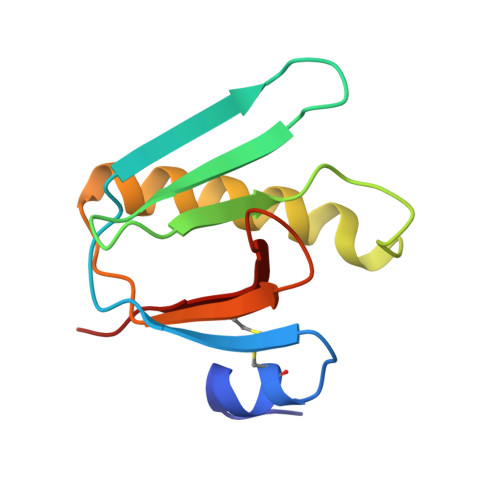Crystal Structures Exploring the Origins of the Broader Specificity of Escherichia Coli Heat-Labile Enterotoxin Compared to Cholera Toxin
Holmner, A., Mackenzie, A., Okvist, M., Jansson, L., Lebens, M., Teneberg, S., Krengel, U.(2011) J Mol Biol 406: 387
- PubMed: 21168418
- DOI: https://doi.org/10.1016/j.jmb.2010.11.060
- Primary Citation of Related Structures:
2XRQ, 2XRS - PubMed Abstract:
Cholera toxin (CT) and Escherichia coli heat-labile enterotoxin (LT) are structurally and functionally related and share the same primary receptor, the GM1 ganglioside. Despite their extensive similarities, these two toxins exhibit distinct ligand specificities, with LT being more promiscuous than CT. Here, we have attempted to rationalize the broader binding specificity of LT and the subtle differences between the binding characteristics of LTs from human and porcine origins (mediated by their B subunit pentamers, hLTB and pLTB, respectively). The analysis is based on two crystal structures of pLTB in complexes with the pentasaccharide of its primary ligand, GM1, and with neolactotetraose, the carbohydrate determinant of a typical secondary ligand of LTs, respectively. Important molecular determinants underlying the different binding specificities of LTB and CTB are found to be contributed by Ser95, Tyr18 and Thr4 (or Ser4 of hLTB), which together prestabilize the binding site by positioning Lys91, Glu51 and the adjacent loop region (50-61) containing Ile58 for ligand binding. Glu7 and Ala1 may also play an important role. Many of these residues are closely connected with a recently identified second binding site, and there appears to be cross-talk between the two sites. Binding to N-acetyllactosamine-terminated receptors is further augmented by Arg13 (present in pLT and some hLT variants), as previously predicted.
Organizational Affiliation:
Department of Chemistry, University of Oslo, P.O. Box 1033 Blindern, NO-0315 Oslo, Norway. [email protected]

















